Ambitious plan chalked out to merge FATA with Khyber-Pakhtunkhwa
Committee recommendations emphasise on security, development
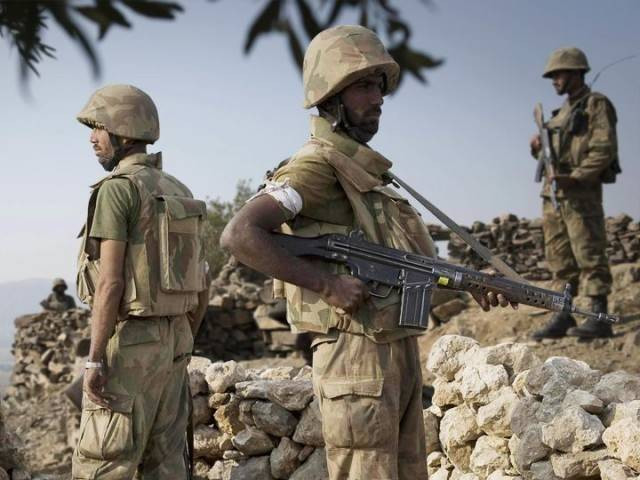
A file photo of security forces n FATA. PHOTO: ISPR
The committee deciding the fate of the tribal areas has concluded that the option to merge the region with Khyber-Pakhtunkhwa is the only viable route to mainstream the areas. A five-year plan has been devised for this purpose.
The 51-page report of the Fata committee, submitted to Prime Minister Nawaz Sharif, reads that without reforms, the Army may have to stay in Fata indefinitely, thus affecting strategic military balance on the Eastern front.
FATA’s merger with K-P a repeated plea
“A security vacuum after Pakistan Army’s withdrawal would create more space for terrorists and undesirable elements, reads the final report, a copy of which is available with The Express Tribune.
It was proposed that in order to sustain the successes achieved by the military, law enforcement agencies and political administrations, legal and security reforms are essential for the “build, operationalisation and transfer phases,” the report says.
The final meeting of the committee was held in the first week of August, an official told The Express Tribune. “It was sent to the PM’s office for a final nod.” He adds there were expectations that the final announcement would be made on August 14, but it has yet to get the official approbation.
During the proposed five-year plan to bring the tribal areas at par with the rest of the country, six areas were identified under the reforms package.
- Rehabilitation and Reconstruction
The target date for repatriation of all displaced people should be end of 2016, the reports states. The reconstruction phase should be completed before the end of 2018. Foreign donors may be approached to provide part of the financial resources for the reconstruction plan. The document goes onto state that the comprehensive rehabilitation and reconstruction plan, already launched by the FATA Secretariat, should be synchronised with the above timelines.
Merging of Fata and K-P
“While the rehabilitation and reconstruction of infrastructure, which includes roads, communications, power lines, water supply, education, and health facilities, should be undertaken by the public sector agencies, the repair or rebuilding of private houses should be left to the owners themselves by giving them cash compensation at prescribed rates.”
It stated this would not only ensure much quicker construction, but will also facilitate the revival of economic activity and employment opportunities in the construction sector. Supply of non-grid solar units at subsidised rates should be an important part of the plan.
Socioeconomic development of FATA
The index of poverty and unemployment is much higher than the rest of Pakistan, the report points out. “There is hardly any private investment in Fata, partly because of the security situation and partly due to the FCR. A large portion of public funds are wasted through corruption.” The committee’s report pointed out that such constraints have to be addressed on a priority basis.
It said the Khyber-Pakhtunkhwa governor will prepare a 10-year Development Plan for Fata before the end of 2016. A major aim of this programme will be to bring the tribal belt at par with the rest of Pakistan, according to all socioeconomic indicators. Around 20% of the allocation of the 10-year plan should be channelled through local bodies. For this purpose, the National Finance Commission should be asked to allocate 3% of the divisible pool for the implementation of the plan.
A FATA Development Council may be set up under the governor to exercise oversight on preparation and implementation of the plan. All senators, FATA MNAs, SAFRON secretary, K-P chief secretary, FATA ACS, Chief Executive FATA Development Authority, four technocrats nominated by the governor, FATA Secretariat P&D secretary and COS 11th Corps will be members of this council.
The existing FATA Development Council will be renamed the FATA Development Committee and its approving powers will be increased from the present Rs400 million to Rs2 billion and that of FDWP from Rs200 million to Rs1 billion.
All official posts in Fata should be upgraded and brought at par with Khyber-Pakhtunkhwa. The report states that salaries, under the project policy, should be 20% higher than the project policy of K-P.
“The State Bank of Pakistan should encourage more bank branches in FATA. [Also], the quota of Fata students in education and health institutions should be double and retained for 10 years after the merger
Elected local bodies
The report also spoke about the post-repatriation scenario of tribespeople displaced by the war on terror. “After completion of repatriation to their native areas, party-based local bodies elections can be held in Fata in 2017,” it said. This would require the promulgation of a Fata local government regulation, which should be formulated within three months. It was recommended that all other formalities, such as updating electoral rolls, finalising the constituencies, as well as rules and regulations, should be completed before the end of 2016. A separate unit for Fata may be created in the Election Commission office in Peshawar.
Dealing with FATA
Legal Reforms
The report stated that the FCR should be renamed the FATA Good Governance Regulation/Act201 and all sections related to collective/vicarious responsibility should omitted, thereby making an individual responsible for his own acts initially in protected areas and gradually the whole of Fata.
It stated that the the jirga system should be retained for both civil and criminal matters, whereby the court will appoint a council of elders to decide factual issues and announce judgments on the basis of riwaj and the prevailing law in force.
Importantly, it was recommended that the jurisdiction of the Supreme Court and the high court be extended to the tribal areas by amending Article 247 and other relevant laws, so that those who want to protect their fundamental rights can do so like any other citizen of Pakistan.
“All stakeholders must maintain clarity over the terms riwaj and jirga.
The committee proposed retaining the jirga system in the civil and criminal Justice system of Fata for the reason that an all-together repeal would be too drastic a step. |
Moreover, with certain changes in the procedures, the Jirga process could start resembling the “jury system”, which is an acceptable process in all the major legal systems of the world. Simultaneously, any legal instrument, which incorporates Riwaj as part of the judicial process, must ensure that it’s not in conflict with fundamental rights and other substantive laws.
Firstly, the committee said judicial processes, based on Riwaj, will be formalised and codified in such a manner that these shall become an integral part of the judicial system, having passed through the scrutiny of the superior courts.
The other possibility is that with the passage of time, the citizens of Fata discard it in favour of a system that is the norm in the rest of the country, thus bringing in uniformity and equality.
Capacity-building of LEAs
The committee also proposed the reorganisation and revamping of levies for police functions and provision of standard/uniform as well as basic training of the force, along with the provision of in-service and specialised training.
Drive to commence in FATA
Provision of specialised equipment, especially arms/ammunition and surveillance devices, was also recommended. Meanwhile, it was stated that destroyed/damaged Frontier Corps and levies posts should be reconstructed. Sanction of additional 20,000 men in the levies force immediately. The report called for improved management of the border between Pakistan and Afghanistan.
Land settlement
An important requirement for the administration of civil laws is proper land and property records in FATA. These are currently available, partly, in two agencies—South Waziristan and North Waziristan. The task of preparing these records should, therefore, be taken up on a priority basis by drawing on the model of computerised records recently adopted in Punjab. Property records are an important prerequisite for banking operations in Fata to attract private investment.
Implementation structure and mechanism
Implementation of the ambitious policy and development reforms are a challenging task. One of the major differences between the earlier reforms in the Federally Administered Tribal Areas and the present set of reforms is that there was no implementation and oversight mechanism.
The cause of the failure of such reforms could perhaps be found in the absence of an implementation mechanism, which should be an integral part of any recommendations to reform the tribal belt.
This report proposes an implementation structure to ensure that recommendations proposed by the committee are implemented and sustained. This chapter proposes an implementation structure to ensure that all the objectives are successfully achieved.
To achieve success in such a demanding context, broad-reaching reforms a robust implementation strategy is needed which will address political and technical aspects of implementation to overcome weak governance structures and entrenched resistance. Two components are therefore required for success:
- Sustained political engagement (i.e. a permanent cabinet-level FATA Committee).
- A small team of committed people at the technical-level with a relentless and uncompromising focus on reform implementation and efficient delivery.
These two components are inexorably linked—both are necessary and neither is sufficient on its own. A cabinet-level committee will, throughout the transition, provide the political support and cover required to implement challenging reforms efficiently.
This apex body could not only supervise the execution of the committee’s recommendations, but also suggest remedial actions as midcourse corrections. It is therefore proposed a reforms implementation committee, comprising the K-P governor, SAFRON minister, law minister, national security advisor, SAFRON secretary and a representative of the army be set up to review the progress of these reforms.
The PM should undertake a quarterly review on the progress of these reforms with all the stakeholders. Simultaneously, another supervisory structure may be notified through which is chaired by the K-P governor and consists of parliamentarians, technocrats and relevant officials.
In order to provide secretarial support to the committee on the federal level, a small unit is also proposed at the Ministry of SAFRON. The purpose of the unit will solely be to support the committee and it will not be responsible for actual implementation.
The operational work will be undertaken by the FATA Secretariat. It is important to ensure that the secretariat has the right mix of skill, qualifications, and expertise to ensure successful implementation of the reforms. For this purpose, a unit of the Directorate of Transition and Reforms may be established.
The unit will report to the FATA Reforms Commission to ensure it has political support to implement tough reforms. There are three possible options for the team leader: the ACS, the P&D secretary or a dedicated officer. Depending on which option is availed, the reporting line to the FATA Committee will either be directly or through the ACS.
Directorate of transition and reforms
It is proposed that the Directorate of Transition and Reforms be the sole institution/body responsible for planning, designing, managing, coordinating, and monitoring activities, projects and policy interventions required to implement the recommendations of the FATA Reforms Committee. The implementation of reforms would either be conducted directly by the Directorate, or by other government actors in coordination with the Directorate. The directorate may also provide technical assistance to the FATA Secretariat and other relevant institutions/departments in all sectors/areas relevant to reform interventions during the transition. The Directorate may not be an institution in perpetuity and its existence will depend on the transition period in Fata.
The directorate will be structured around the recommendations of the FATA Committee. In this context, certain sections pertaining to the consultations of the committee with various stakeholders are proposed to be part of the directorate. These sections are, however, subject to change as per the final recommendations of the committee.
As an implementation unit, and with most of the work happening at the subdivisional and agency level, the directorate will need to have seven offices
Published in The Express Tribune, August 18th, 2016.

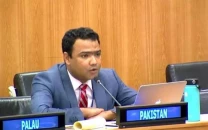
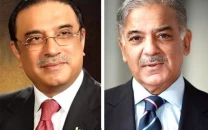
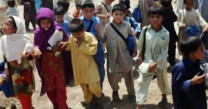

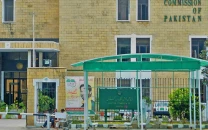
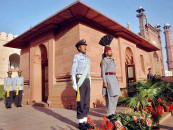












COMMENTS
Comments are moderated and generally will be posted if they are on-topic and not abusive.
For more information, please see our Comments FAQ